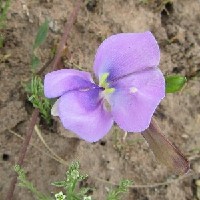General information
Vigna unguiculata
Grown on more than 11.5 million hectares in Africa, Southeast Asia, and some countries in the Americas, cowpea (Vigna unguiculata) is the third most important pulse worldwide. It is widely planted in semi-arid regions because of its ability to produce in dry and hot conditions. Cowpea seeds are highly nutritious, thanks to a high protein content (c. 25%). Its leaves are an important food source for some cultures in Africa. Cowpea is also used for animal feed and green manure.
Cowpea originated in Sub-Saharan Africa and spread to East and West Africa, and then Asia. In Asia, it evolved into a vegetable form known as yardlong bean. The crop was introduced to America with the slave trade in the 17th century.
Genesys lists information on more than 30,000 accessions, 60% of which are landraces or traditional cultivars. The largest holdings are safeguarded at the International Institute of Tropical Agriculture (IITA) and the USDA-ARS genebanks.
The International Institute of Tropical Agriculture (IITA) and the International Livestock Research Institute (ILRI) have together developed dual-purpose cowpea varieties for human and animal consumption during the dry season, which are receiving wide acceptance among farmers in West Africa.
The global strategy for the conservation of cowpea genetic resources, published in 2010, compiles twenty recommendations to effectively conserve and use the diversity of the crop. These include: encourage safety duplication of existing collections; promote basic plant research (e.g. resolve taxonomic issues, and characterize viruses and diseases in centers of origin); perform and document evaluation and characterization of existing germplasm; and develop molecular tools to identify duplicates among collections.
The new, more comprehensive strategy for the global conservation of Vigna aims to update and complement the first one by also including Vigna crops and their wild relatives from the rest of the world, in particular Asia. The new strategy has been developed through a survey of all genebanks around the world.

